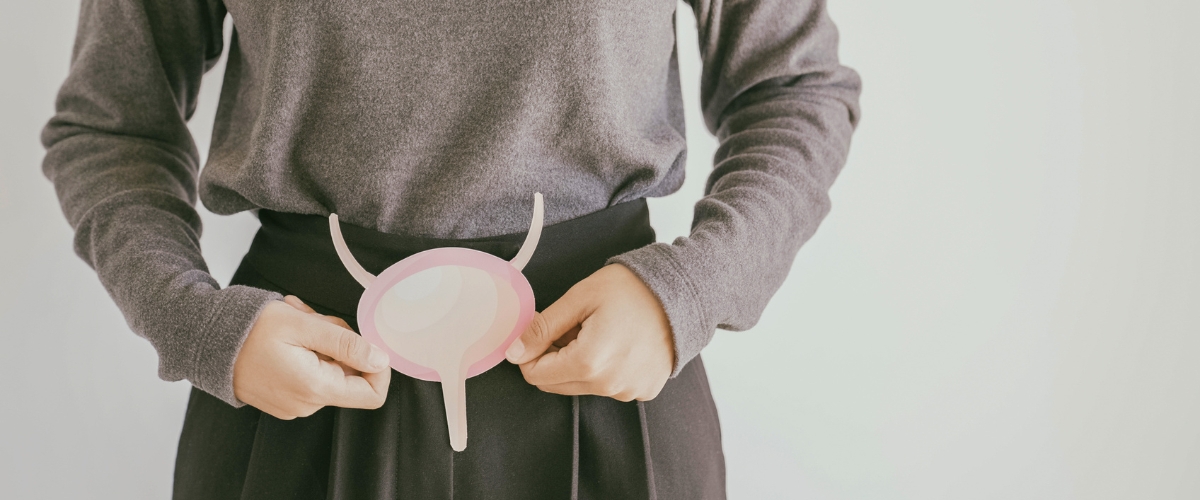Understanding Urinary Incontinence: Types, Causes and Treatment Options

July 03, 2024 | Tags:
Urinary incontinence is a common – yet often undiscussed – condition affecting over 25 million Americans and more worldwide. It occurs when there is a loss of bladder control, ranging from minor occasional leaks to not making it to the toilet in time. Urinary incontinence becomes more common with age, but it is not limited to older individuals.
Dr. Linda Patterson, Assistant Medical Director at Medical Mutual, discusses urinary incontinence, covering its types, causes, treatment options and strategies for improving bladder health.
Types and Symptoms of Urinary Incontinence
There are several types of incontinence, the most common being stress, urge and overflow.
- Stress Incontinence: Caused by pressure on the bladder during activities like coughing, sneezing, laughing or exercising. This type is common among women, especially after childbirth and menopause.
- Urge Incontinence: Results from a sudden and intense urge to urinate, leading to involuntary leakage. This is often associated with an overactive bladder.
- Overflow Incontinence: Occurs when the bladder doesn’t empty completely, leading to constant dribbling. More common in men with prostate issues.
-
Mixed Incontinence: A combination of stress and urge incontinence.
What Causes Urinary Incontinence
Urinary incontinence can result from various factors, including:
- Exerting pressure on the bladder during activities like coughing, sneezing, laughing or exercising.
- Urinary infections.
- Neurological conditions, such as multiple sclerosis, stroke or spinal cord injury.
- Diabetes.
- Incomplete bladder emptying (often associated with prostate hypertrophy in men).
- Certain drinks, foods and medications, such as caffeine and alcohol, act as diuretics, leading to increased urine production.
- Muscles stretched during pregnancy and childbirth, weakening the pelvic floor.
Treating Urinary Incontinence
Urinary incontinence is typically treated using the following methods:
- Antibiotics: If the cause is an infection, doctors often prescribe antibiotics.
- Scheduled toilet trips: Setting specific times for bathroom visits can help manage incontinence.
- Pelvic floor exercises: These exercises strengthen the pelvic floor muscles.
- Fluid management: Proper hydration and monitoring fluid intake play a role.
- Nerve stimulation procedures: Certain procedures target nerves to address incontinence.
- Medications: Prescribed drugs can help control urgency.
Ways to Maintain and Improve Bladder Health
There are several simple steps you can take to maintain and improve your bladder health, including:
- Listen to your bladder: When you feel the urge, don’t hold it in! Head to the bathroom promptly.
- Take your time: Fully empty your bladder; rushing can lead to incomplete voiding, where the bladder does not completely empty during urination.
- Wipe from front to back: This helps prevent urinary tract infections (UTIs).
- Post-intimacy pit stop: Urinating after intercourse helps flush out bacteria.
- Flex those muscles: Regular pelvic floor exercises strengthen your bladder control.
Medical Mutual members have access to Bloom by Sword Health through our Chronic Condition Management Program. Bloom offers real-time, individualized pelvic floor care available at no additional cost to all US-based Medical Mutual members and covers dependents who are age 18 and older with vaginal anatomy, regardless of gender identity. A clinical specialist will collaborate with you to create a personalized program tailored to your unique condition, goals and needs. Learn more about Bloom and how to get started by visiting their website.
When it’s Time to See a Doctor
If urinary incontinence starts impacting your quality of life, it’s time to talk with your primary care provider (PCP). It may be necessary to seek urgent medical attention if you experience symptoms such as fever, pelvic pain or flank pain, which is pain in your back that could indicate an infection in the kidneys.
Urinary incontinence is diagnosed through several methods. These include testing a urine sample for infection and treating it if diagnosed, maintaining a voiding diary to track trips to the toilet (including nighttime visits), assessing post-void residual urine volume or performing cystoscopy, which is a procedure where a urologist examines the bladder.
“Diagnosis and treatment of incontinence can take a long time, ranging from weeks to months,” Dr. Patterson said. “Be patient and explore conservative options before considering procedures.”
You are not alone and there are ways to manage urinary incontinence and enhance your well-being. Medical Mutual members who do not have a PCP and need help finding one can use our Find a Provider tool or call Customer Care at the number listed on their member ID card.



